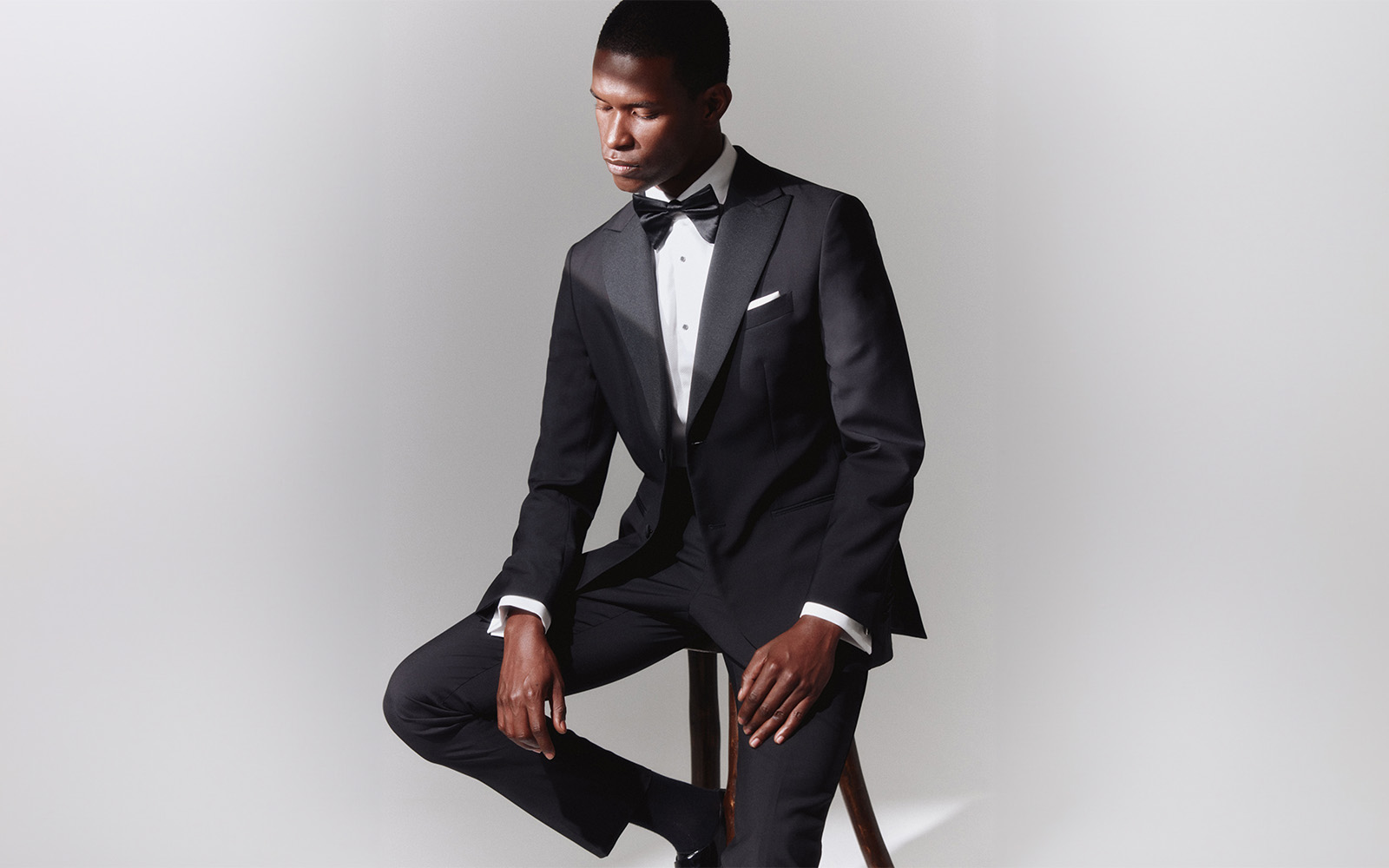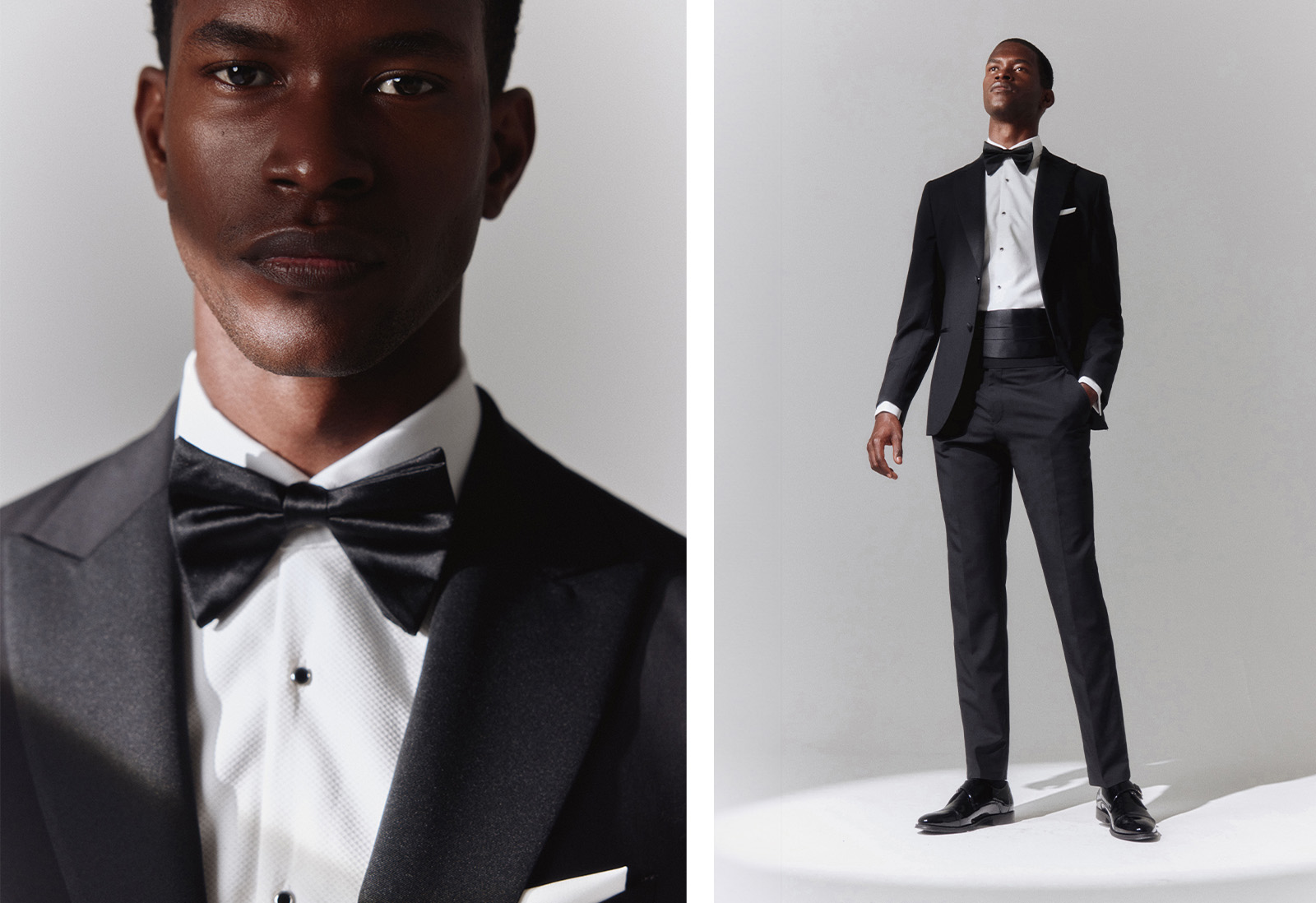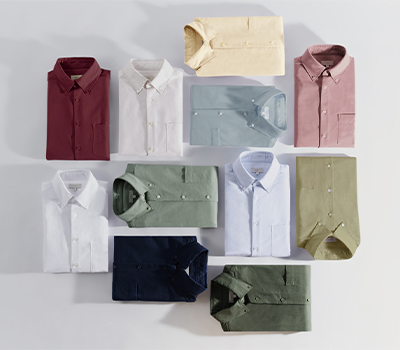Suit or tuxedo? Answers here.
HOW IS A TUXEDO DIFFERENT FROM A SUIT?
What’s the difference between a suit and a tux? It’s more than just the colour or the addition of a bow-tie.
Below, we unpick the tuxedo and all its parts so you’ll know you’re wearing the right thing next time you get a black-tie invitation.
FIRSTLY, IS IT A TUXEDO OR A DINNER SUIT?
It’s actually just in the name. In the UK we traditionally say dinner jackets, while across the pond they say tuxedos. But now you’ll find it called a tuxedo more often than not.
OK, SO SUIT OR TUX?
Both are pretty smart, right? Yes, but the real difference between a tuxedo and a standard suit is that one is more refined than the other. It comes down to satin – tuxedos and dinner jackets have it, while suit jackets generally don’t. You’ll usually see satin adding elegance to the lapels, buttons and pockets of a tuxedo jacket. The satin is often black, but also appears as the same colour as the jacket in some occasions, like on our navy texture jacket. The main body material can have a slight sheen too, which you don’t normally see on standard suits.
The lapels of a suit and tux are where the lines start to blur. Both evening suit jackets and dinner jackets can have notch and peak lapels, with peak lapels generally standing out as the dressier option. The difference comes with shawl lapels. These are the single pieces of material that sit in an unbroken curve from your collar to your waist, and they’re only seen on tuxedo jackets, like our tailored fit shawl lapel tuxedo.
You’re also more likely to see a single-button fastening on a tux and a two-button fastening on a business suit. It’s because, broadly speaking, the fewer buttons there are on a jacket the more formal it is. Both dinner jackets and suit jackets can be double-breasted, so it’s best to look at the other pointers to decide which side of the fence it sits on.
HOW TO STYLE A TUXEDO THE CLASSIC WAY
For black-tie invitations, you’ve got a dress code to follow. This actually makes styling your tux pretty easy if you want to follow the rules.
The classic partner to your tux is a white dress shirt – it can have either white or black buttons, and will sometimes be pleated down the front. Choose a classic collar, saving wing collars for white-tie, and remember your cufflinks because your shirt will probably have double cuffs too.
Then, add a bow tie (learn how to tie a bow tie here). Play it safe with black, or let it be the talking point of your outfit with something bigger or brighter. Finish off your accessories with a white pocket square in a flat fold or in a neat ruffle. You can also wear a cummerbund (the large waist sash associated with tuxes) but it’s not necessary.
Finally, choose a pair of dress shoes in matte or patent leather and give them a good polish the night before.
HOW TO DO BLACK TIE YOUR OWN WAY
Rules are good and all, but we think the best looks exist outside of the dress code. Try a trending jewel-toned jacket like our burgundy velvet. Or flip the monochrome palette with a white dinner jacket worn over a black shirt; it still looks smart but adds a bit of interest to your look.
Something more relaxed more your style? A fine woollen rollneck looks just as refined as a shirt and bow-tie, but is all about comfort.







